When gardens produce abundance, they create habitat for other living things. Plants, animals, insects and fungi interact with each other to create ecosystems.
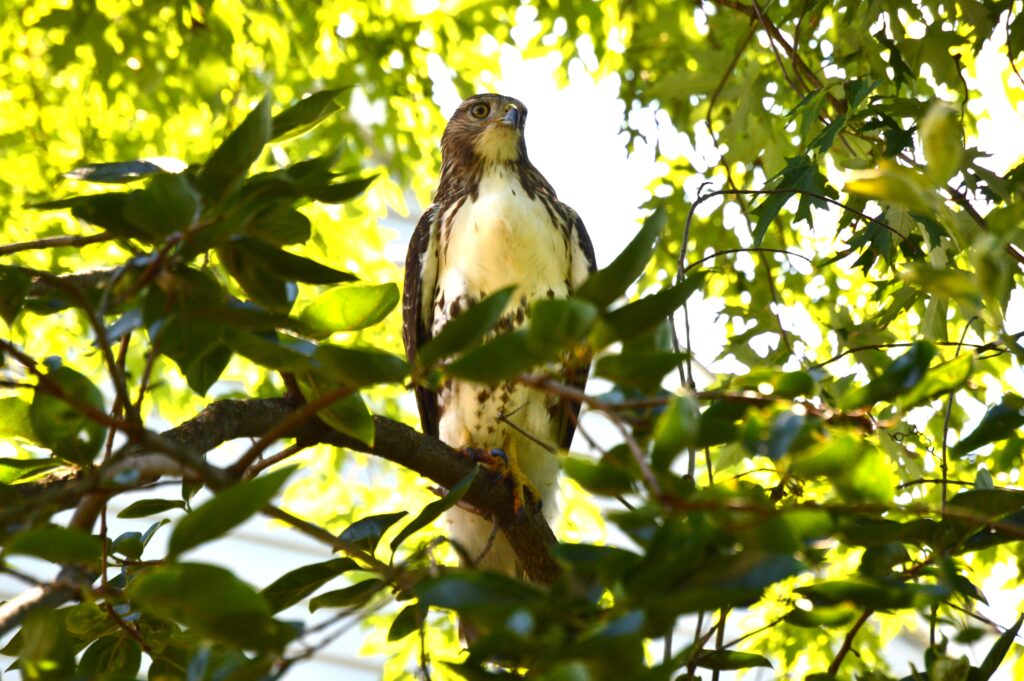
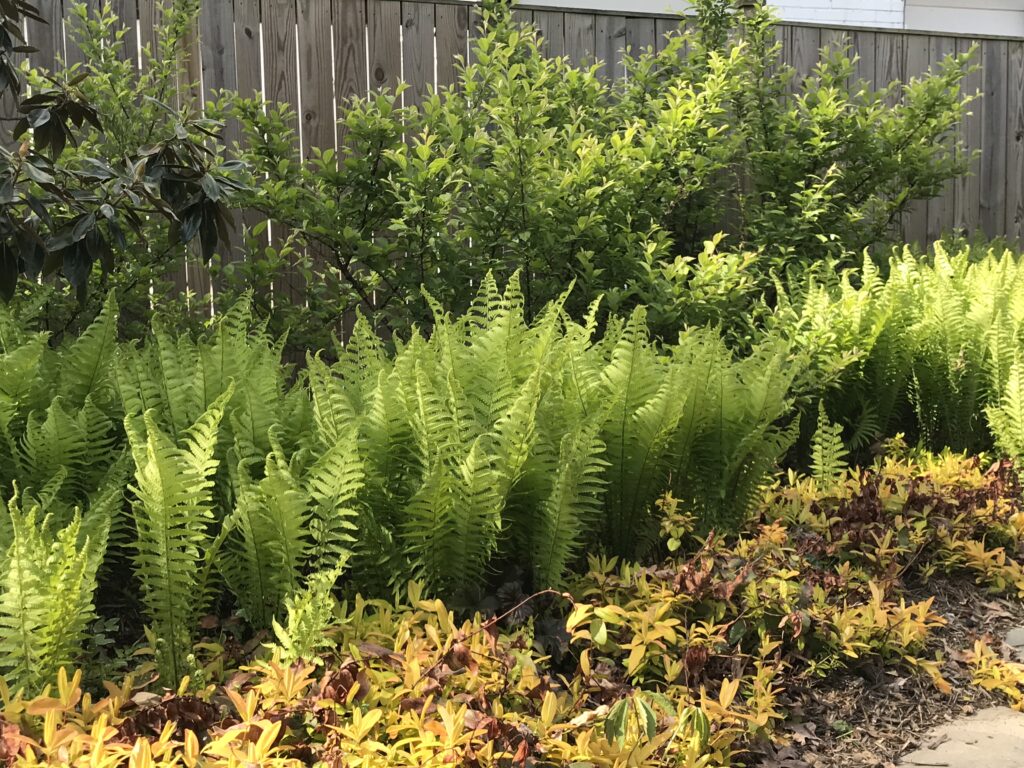
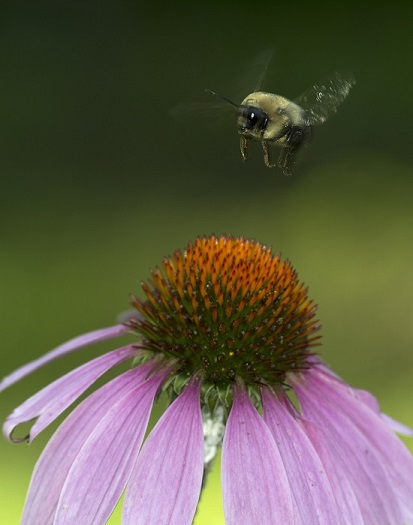
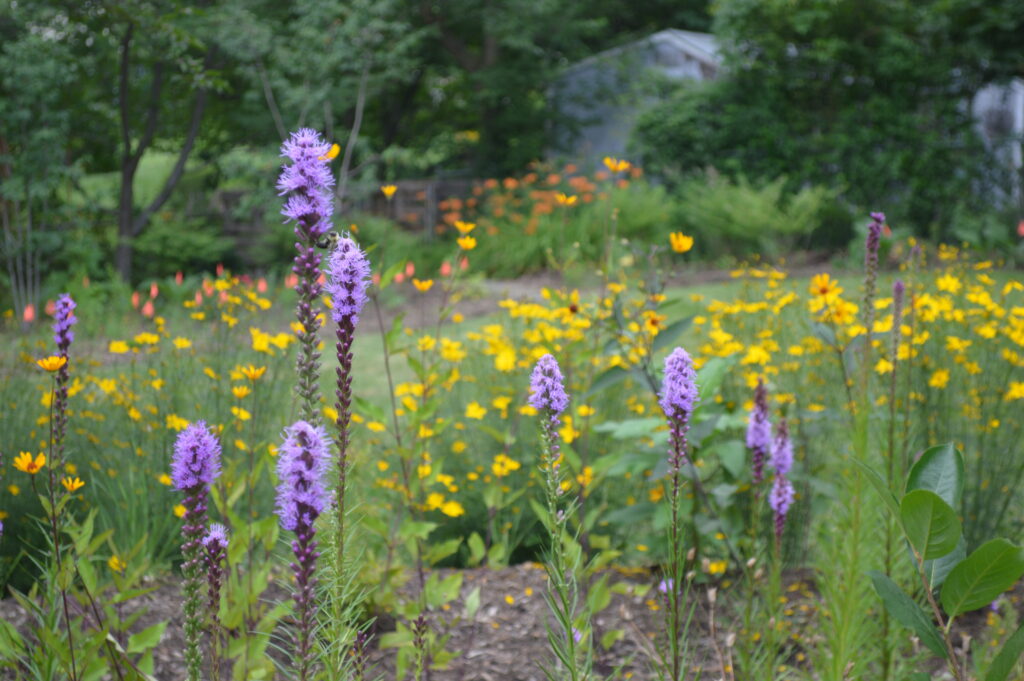

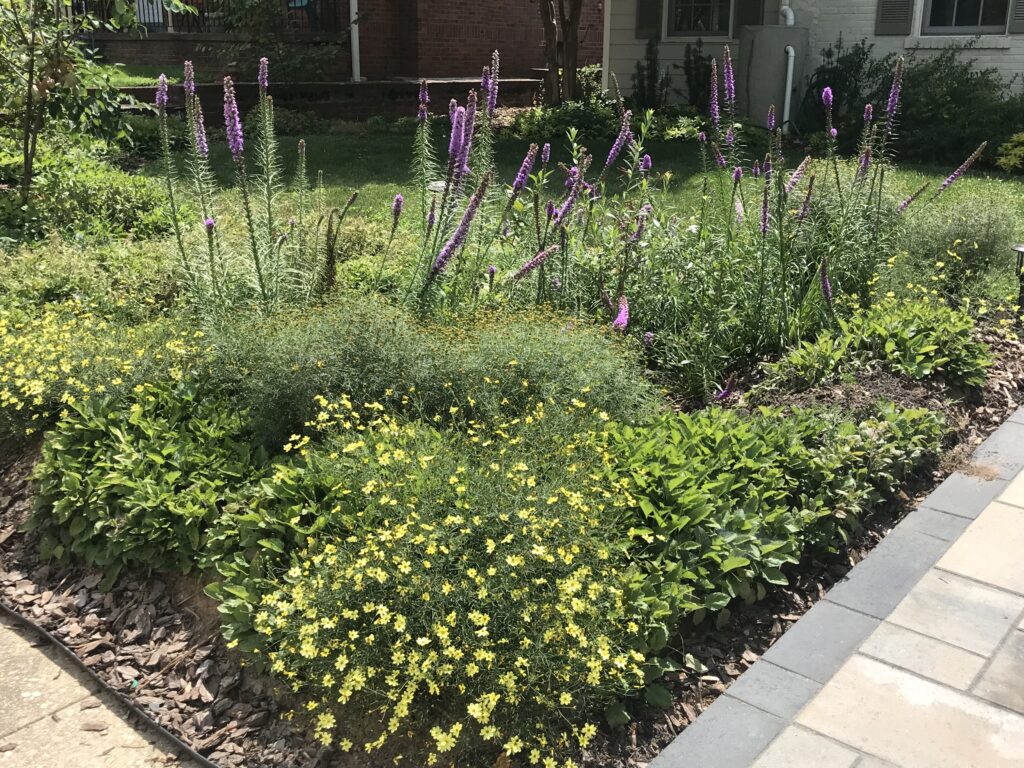
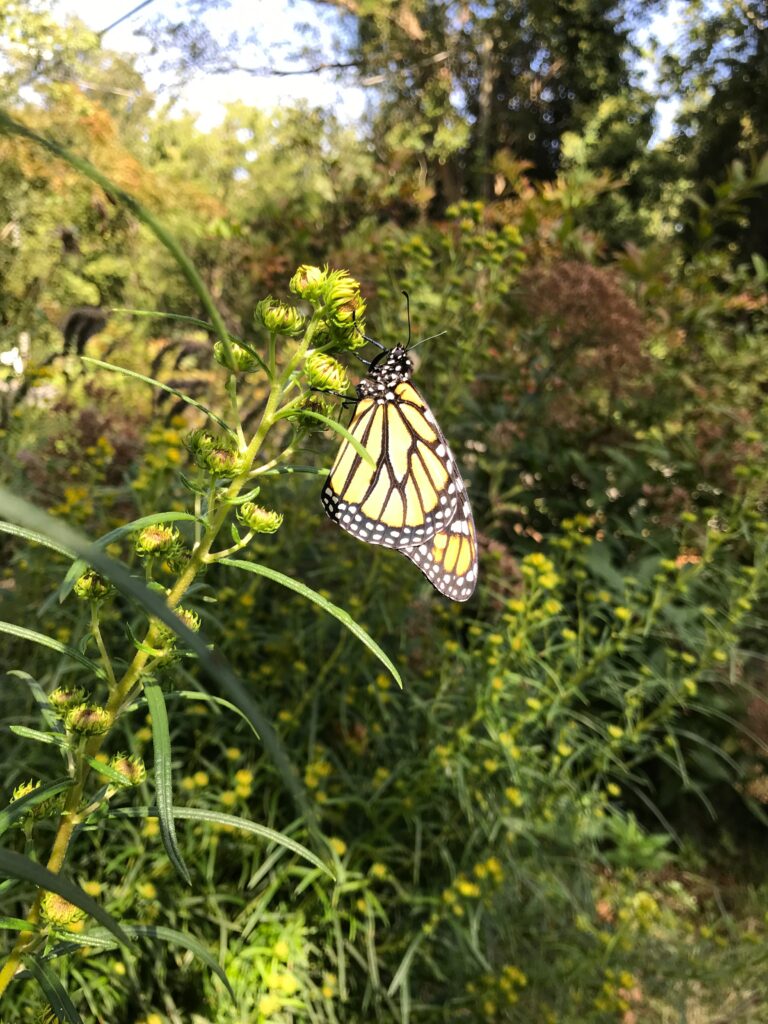
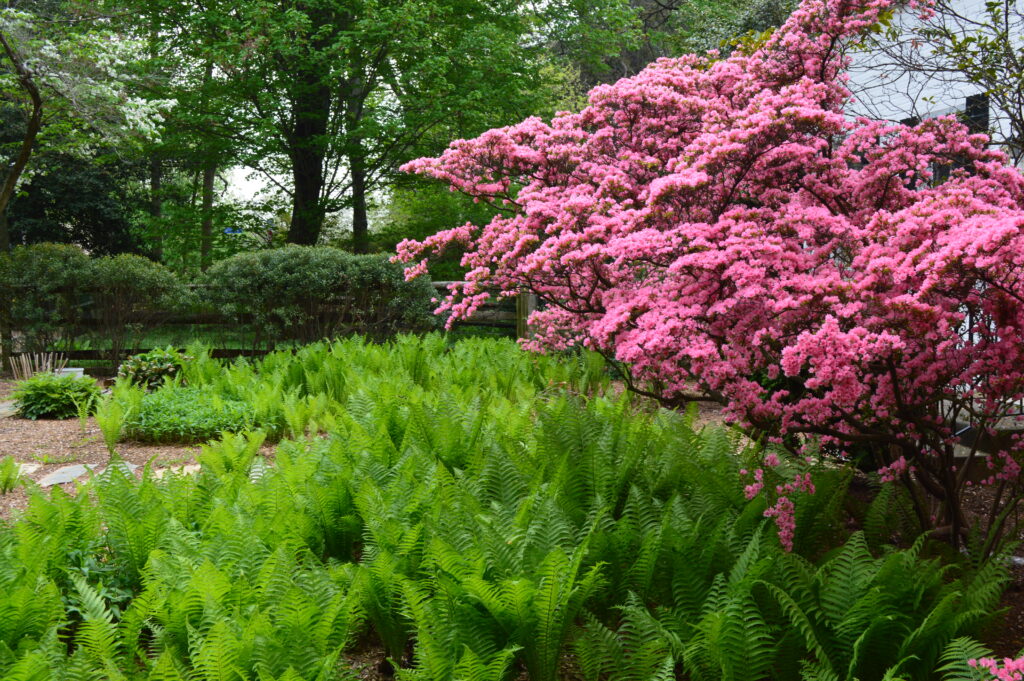

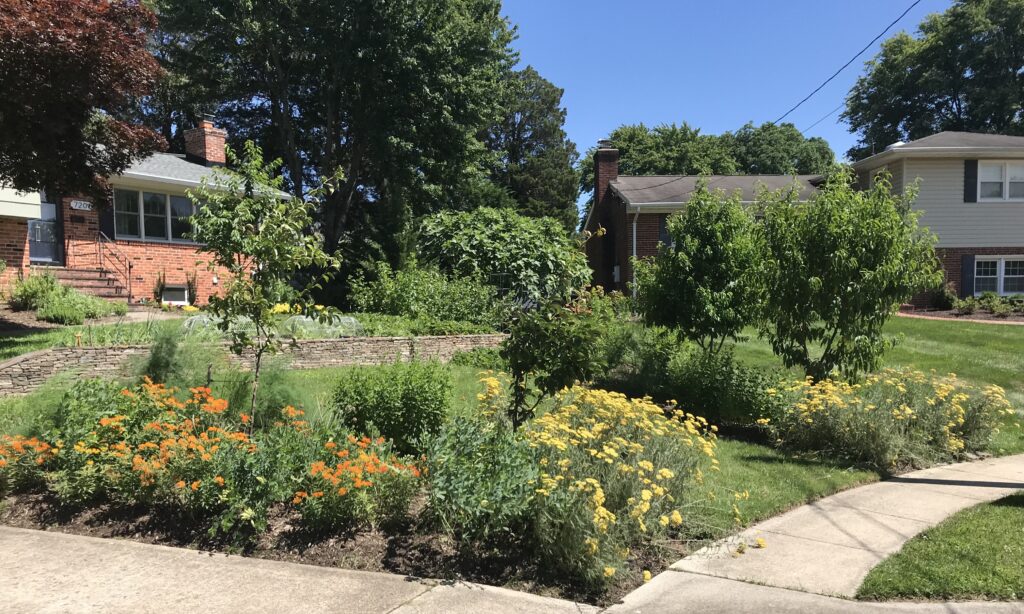
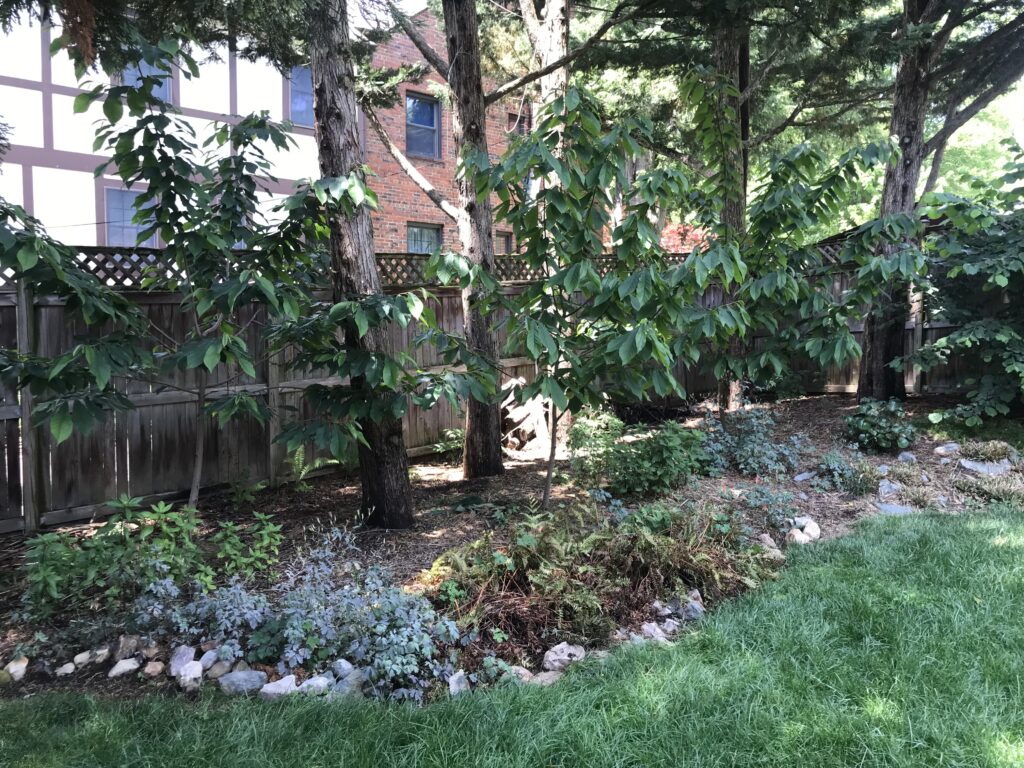
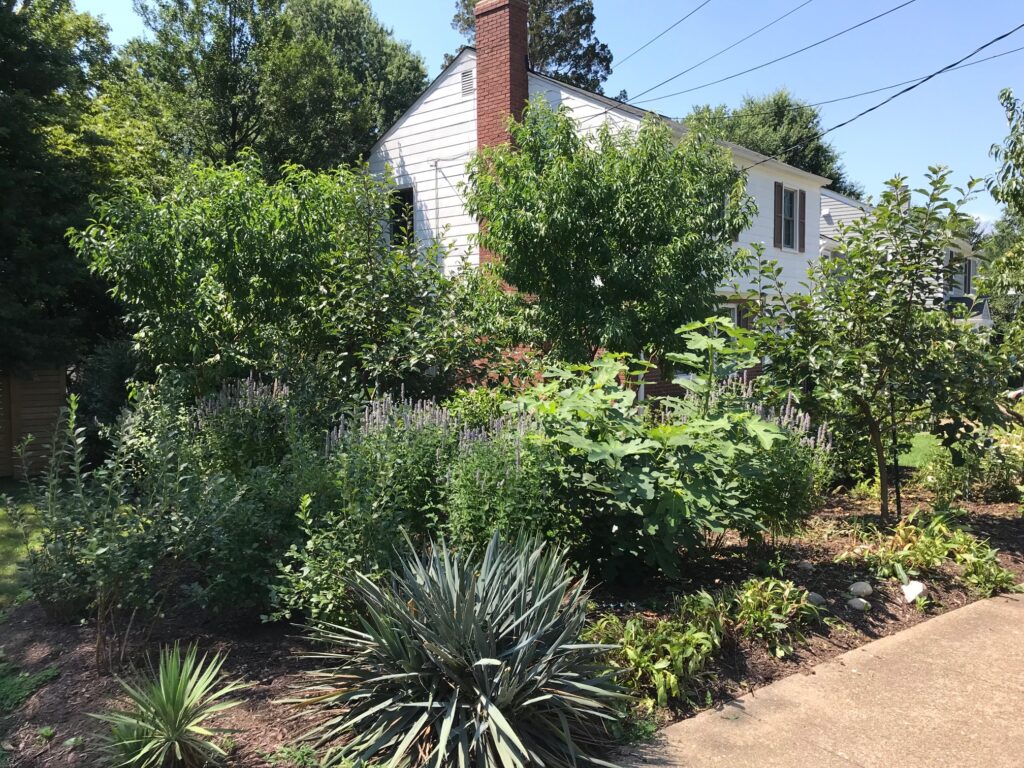
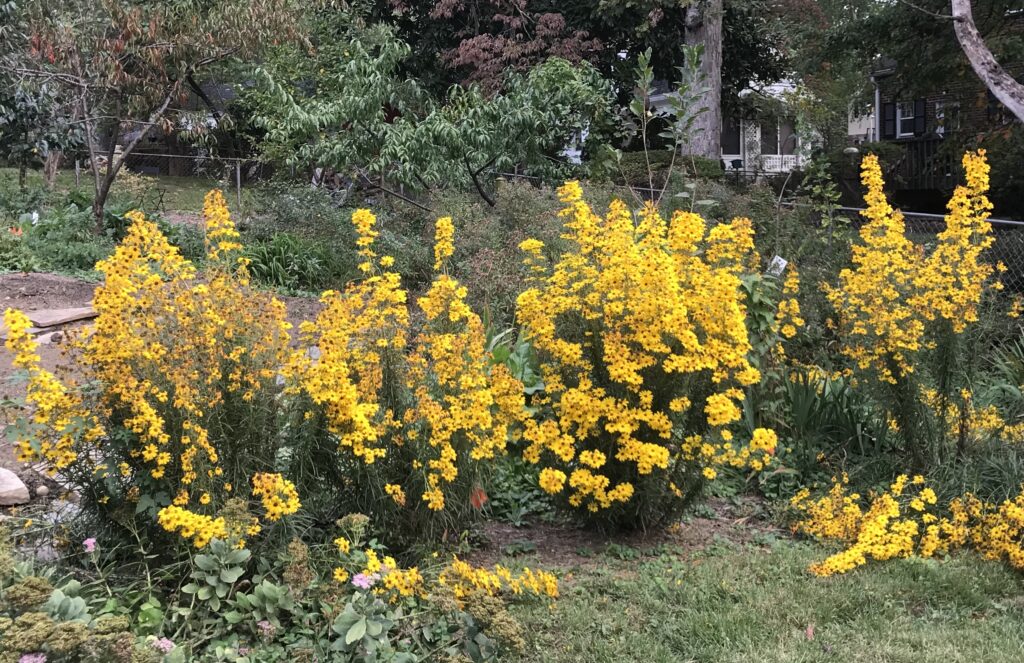

When gardens produce abundance, they create habitat for other living things. Plants, animals, insects and fungi interact with each other to create ecosystems.














What no lawn? Yes! This landscape design for a client in Arlington is full of native and edible plants instead of a lawn!
The front contains a large vegetable garden surrounded by two layers of 4′ deer fencing with asparagus in between and native meadow plants as a backdrop.
Flagstone steps take you to a terraced plateau filled with Asian pears, blueberries, persimmons, sour cherries, cornelian dogwoods, a fig and a plethora of native flowers that attract beneficial insects.
The shady back slope is held together by serviceberries, paw paws, hazelnuts, elderberries, fragrant sumac and various native ground covers and spreading perennials.
Viburnums, wax myrtles, and a few hollies surround the property to provide privacy and bird habitat.
A couple of black gum trees (Nyssa sylvatica) provide shade for an open forest floor of edible ostrich fern and other woodland natives.
The rear of the property is a daunting invasive Ailanthus grove on a steep slope. After removing the invasive species, the space gives way to a sunny slope appropriate for a food forest. It is comprised of Paw paw, Asian persimmon, Cherry and Peach. Companion plants include Indigobush, False Blue Indigo, Pink Turtlehead, Butterfly Milkweed and Anise Hyssop.
The front yard is full of edible natives like American Hazelnut, Blueberry, Elderberry and Currant paired with ornamental natives like Dogwood, Redbud, Bayberry, Echinacea, Asters and Virginia Bluebells.
Leaf Recycling
©2015 Danylo Kosovych and Organic Edible Gardens LLC
One of the first practices that struck me as odd when I began landscaping is the collection and disposal of the season’s fallen leaves. Leaves are a good source of organic matter and plant nutrients. You can reduce your mulch and fertilizer inputs by using what nature provided, rather than paying money or expending energy to get rid of them. If you live in a forest you can simply let them lie but like most people who have a combination of lawn, garden beds and paved surfaces the leaves will need to be processed in one of three ways.
Deciduous trees drop their leaves each fall storing all their energy within their roots. In mature forests the leaves fall onto the ground and whatever nutrients remain are cycled back into the system. Trees need leaf litter; it keeps the soil warm in the winter and prevents evaporation in the summer. Just as we put on more clothes in the winter to keep ourselves warm. Leaves create a warm blanket on the ground, their active decomposition creates heat. The litter of fallen leaves under the tree creates an ideal substrate for beneficial soil fungi and bacteria to grow in. The metabolic activity from these microorganisms can keep the temperature higher than in the surrounding area. The increased warmth supports microorganism activity and root growth as well as providing a habitat for insects and small animals.
The large area and number of trees in the forest keep the leaves on the forest floor. Landscape beds are much smaller and many times slightly raised in comparison to walkways and lawns. As a result, fallen leaves tend to blow off of landscape beds and collect in lower areas of the property. Shredding the leaves reduces the surface area that catches the wind, keeping them in place. They also tend to mat less, preventing the smothering of groundcovers. Shredded leaves have a more uniform color than whole leaves. Leaf mulch is an attractive dark brown and slowly decomposes, releasing nutrients to the plants, and preventing winter damage by keeping roots warm.
Shredded leaves in garden beds:
An even easier way to utilize fallen leaves is to shred them into your lawn. This takes only slightly more work than mowing your lawn. You will have to mow your lawn 2-3 times over to get all of the last leaves. All it requires is a mulching blade and closing the discharge chute. A study by Michigan State University, found that mulched oak and maple leaves reduced the amount of dandelions and increased spring green up in lawns. They reduce the prevalence of dandelions by reducing dandelion seed germination. Shredded leaves provide nutrients and organic matter to the lawn producing a thicker, greener more drought tolerant lawn.
Fallen leaves contain a small percentage of nutrients, ranging from 1-3% nitrogen, (the higher being from leguminous trees) and small amounts of phosphorous and potassium. While the percentages might be small, the sheer volume of leaves dropped by large deciduous trees creates an ample amount of nutrients. A low input lawn requires 1 pound per 1000 square feet of nitrogen per year. A heavily wooded lot can produce 100 pounds of leaves per 1000 square feet providing enough nitrogen for the year.
Leaves in the lawn before shredding:
After Shredding:
If you do not have much lawn but have vegetable gardens, then you might want to save the leaves for the compost bin. Compost improves soil porosity by loosening heavy clay soils and retaining moisture in sandy soils. It also adds beneficial microbes that support root growth and break down the organic matter into soluble plant nutrients.
A balanced compost has an equal ratio of brown (dry) and green (wet) or carbonic and nitrogenous material. An over proportionate amount of either one will result in unhealthy microbial activity. Too much carbonic material will be too dry and take too long to break down. Too much nitrogenous material will become sludgy and anaerobic producing a bad smell. Leaves and wood are good examples of brown or carbon rich materials while grass clippings, herbaceous plants and food scraps are good sources of nitrogen rich materials.
There are many beneficial uses for your fallen leaves that can save you time and money in the landscape, not to mention the fossil fuel saved by eliminating the transportation of material. Even if you use machinery to process the leaves you will not use nearly as much fuel as transportation requires. Which method you choose to process your leaves or whether you simply decide to let them be is determined by the makeup of your property.
Fall is the best time of the year to perform a lawn renovation. With temperatures slowly cooling down, an increase in precipitation and reduced weed competition, newly sown seed has a good opportunity to establish itself.
Organic lawn care means no synthetic herbicides or synthetic fertilizers. How do you manage weeds without chemical herbicides? You might ask. You can burn them, or technically heat-sterilize them, with a specially made tool designed for organic agriculture or use an organic herbicide. Both pretty much do the same thing, burn the leaves. Both methods require multiple applications.
A healthy lawn grows in healthy soil. Following a sufficient weed suppression schedule you should take a soil sample and send it off to a trusted soil laboratory for a chemical soil analysis. This will tell you what nutrients your soil has and which it is deficient in. A biologically healthy soil requires organic matter; it is the food that the microbes eat in order to produce nutrients for the plants.
Organic matter improves soil porosity (air) and holds water. Most lawn soils, especially chemically treated ones have low percentages of organic matter. In order to improve this, apply a top-dressing of well matured compost. Follow this with an aeration using a core-aerator in order to reduce compaction, work the compost into the soil and provide a good seed bed for the grass seed.
Immediately after performing the aeration, apply the grass seed. Seed selection is important as certain varieties are best adapted to our climate and varying micro-climates like sun and shade. Finally, apply organic fertilizers as recommended by the soil test. A short time later, after a little help from Mother Nature in the form of rain, you can have a more drought tolerant, lush green lawn for your children to play in without the health risks of synthetic pesticides or contamination of the watershed.
By Danylo Kosovych and Organic Edible Gardens LLC
When it comes to rainwater collection the first thing people think about are rain barrels but you don’t need a barrel to collect rain water. Rain barrels are useful if you want to store water and use it for irrigation but for storm water management they are dwarfed by amount of rainfall that falls in the average storm. Once inch of rain falling over a 1000 square foot roof produces 600 gallons of water. A 50 gallon rain barrel only catches 1/12 of the water. A 600 gallon water tank is not only large and obtrusive but also expensive.
Not to worry, rainwater collection can be achieved in multiple ways without using a container at all. Below are examples of multiple ways we have collected rainwater using the earth as the container.
You can catch rain water in a swale:
A swale is a depression in the earth, dug on contour and linear in shape, therefore adept at catching runoff. This client had runoff problems from their neighbor. We created a swale along the property line to catch and infiltrate the runoff before it entered their property. The Elderberries and Aronia benefit from the additional water.
You can catch rain water in a rain garden:
A rain garden is a bowl shaped depression that works well to catch stormwater from a downspout. We later planted this one with Aronia, Low- Bush Blueberries and native perennial flowers. The soil in the center is deeply tilled and the water infiltrates rapidly, while the plants benefit from the additional water.
Or you can use perforated pipe to leach rain water into the soil:
This is a vegetable garden which we created on contour and directed the roof runoff into a perforated pipe and buried the pipe in gravel. All of the water from the roof infiltrates into the soil and waters the vegetable beds.
Here we used the same principal with the infiltration pipe but planted columnar apple trees on top of the pipe. Now the water from the roof irrigates the apple trees.
Organic Edible Gardens LLC just designed the landscape of this recently constructed energy efficient home. The house was designed and built by Enviro Home Design complete with large planters to catch most of the rainwater coming off of the roof.
For the landscape we designed a two tiered retaining wall planted with native Sedum and grasses to correct the steep slope on the north east corner of the property. The sunny front yard allowed for an Asian Persimmon tree paired with native red twig dogwood, a Purple Leafed Plum paired with a gold leafed variety of Ninebark. In front are Half-High Blueberries and New Jersey Tea to the sides. Liatris spicata, white Echinacea, Baptisia australis and Comfrey are a few of the perennials.
In the shady back yard we chose Redbud and Serviceberry (Amelanchier laevis) as the understory trees paired with Arrowwood Viburnum and Catawba Rhododendron shrubs. Beneath the shade of the understory trees we chose a dark and mysterious Snakeroot cultivar with purple foliage paired by a light and airy yellow leafed spreading St. John’s wort.
For the part shade and part sun side yards we chose Honeyberries (Lonicera caerulea), Crandal American Black Currants, and Virginia Sweetspire.
The homeowners have two large dogs in a small back yard in Arlington. We designed the landscape to allow the dogs to run the perimeter and guard their territory. Plantings are in slightly raised beds surrounded by stone. Species include Apple, Serviceberry, Swiss Stone Pine, culinary herbs, Prickly Pear Cactus and various soil building and insectary plants.
Fall, in general, is the best time of the year for planting. With temperatures slowly cooling down and an increase in precipitation, newly installed plants have a good opportunity to establish themselves. Fall is the best time of year to plant cold hardy perennials, trees and shrubs. They will set their roots over the winter and come back strong in the spring. When it comes to the month of September specifically, this is a good time for planting cool weather vegetables like lettuces, arugula, spinach, beets and carrots. It is also the best time of year to perform a lawn renovation.
Here at Organic Edible Gardens we perform this lawn renovation organically. First we control weeds without the use of chemical herbicides. An organically fertile soil requires organic matter; it is the food that the microbes eat in order to produce nutrients for the plants. Most lawn soils, especially chemically treated ones have low percentages of organic matter. In order to improve this, we apply a top-dressing of well matured compost. We follow this with an aeration in order to improve soil porosity, work the compost into the soil and to provide a good seed bed for the grass seed. Seed selection is important as certain varieties are best adapted to our climate. Finally we apply organic fertilizers whose composition and quantity is determined by a soil test. A short time later, after a little help from Mother Nature in the form of rain, you can have a more drought tolerant, lush green lawn for your children to play in without the health risks of synthetic pesticides or contamination of the watershed.